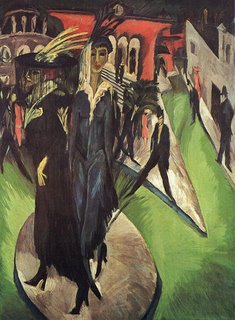The stars of Berlin: Neo-impressionism


The term Neo-Impressionism refers to a pictorial technique where color pigments are no longer mixed either on the palette or directly on canvas, but instead placed as small dots side by side. Mixing of colors takes place from a suitable distance, in the observer’s eye, as an "optical mixture".
Ernst Ludwig Kirchner
German painter, who was one of the leading practitioners of expressionism. He was influenced by the strong colours and compositional distortions of neo-impressionism and by the expressiveness of African and Oceanian woodcarving.
As a founding member of the expressionist group Die Brücke (The Bridge) in Dresden in 1905, Kirchner tried to distil natural forms in radical and sometimes brutal simplifications. In such paintings as Self-Portrait with Model (1907, Kunsthalle, Hamburg), his bold lines and clashing colours create a sense of violent emotion.
Moving to Berlin in 1911, Kirchner produced some of the most characteristic work of German expressionism, especially in scenes with women, in which grotesque distortions mock the mannered artificiality of Berlin society.
His work in the late 1920s became increasingly abstract as he attempted to solve theoretical questions.
The Nazis deemed him a degenerate artist and confiscated 600 of his paintings. Soon afterward, he committed suicide.
Artiste
1910
100cm Χ76cm
Oil on canvas
Brucke Museum
Potsdamer Platz
1914
200cm Χ150cm
Oil on canvas
Staatliche Museen Berlin


<< Home